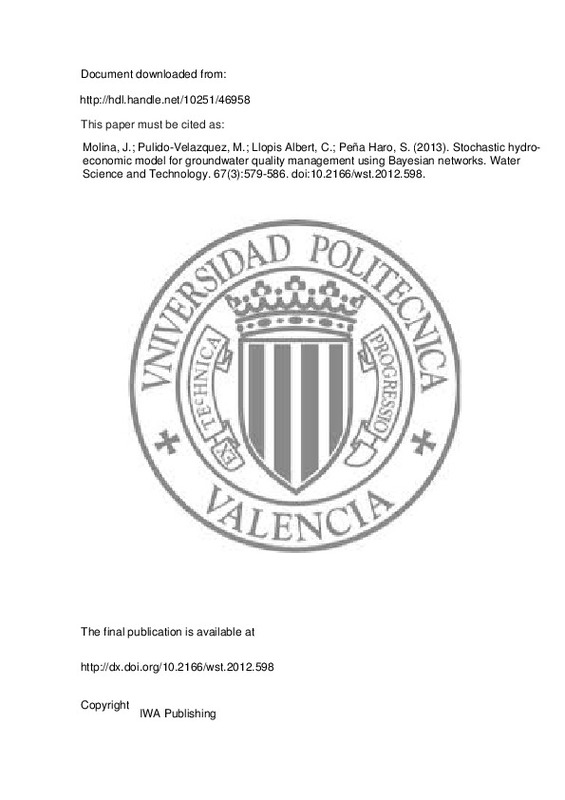JavaScript is disabled for your browser. Some features of this site may not work without it.
Buscar en RiuNet
Listar
Mi cuenta
Estadísticas
Ayuda RiuNet
Admin. UPV
Stochastic hydro-economic model for groundwater quality management using Bayesian networks
Mostrar el registro completo del ítem
Molina, J.; Pulido-Velazquez, M.; Llopis Albert, C.; Peña Haro, S. (2013). Stochastic hydro-economic model for groundwater quality management using Bayesian networks. Water Science and Technology. 67(3):579-586. https://doi.org/10.2166/wst.2012.598
Por favor, use este identificador para citar o enlazar este ítem: http://hdl.handle.net/10251/46958
Ficheros en el ítem
Metadatos del ítem
| Título: | Stochastic hydro-economic model for groundwater quality management using Bayesian networks | |
| Autor: | Molina, J.L. Peña Haro, Salvador | |
| Entidad UPV: |
|
|
| Fecha difusión: |
|
|
| Resumen: |
A strong normative development in Europe, including the Nitrate Directive (1991) and the Water Framework Directive (WFD) (2000), has been promulgated. The WFD states that all water bodies have to reach a good quantitative ...[+]
|
|
| Palabras clave: |
|
|
| Derechos de uso: | Reserva de todos los derechos | |
| Fuente: |
|
|
| DOI: |
|
|
| Editorial: |
|
|
| Versión del editor: | http://dx.doi.org/10.2166/wst.2012.598 | |
| Código del Proyecto: |
|
|
| Agradecimientos: |
The authors gratefully acknowledge the contributions of the following people and organizations. The study has been partially supported by the European Community 7th Framework Project GENESIS (226536) on groundwater systems ...[+]
|
|
| Tipo: |
|







![[Cerrado]](/themes/UPV/images/candado.png)


